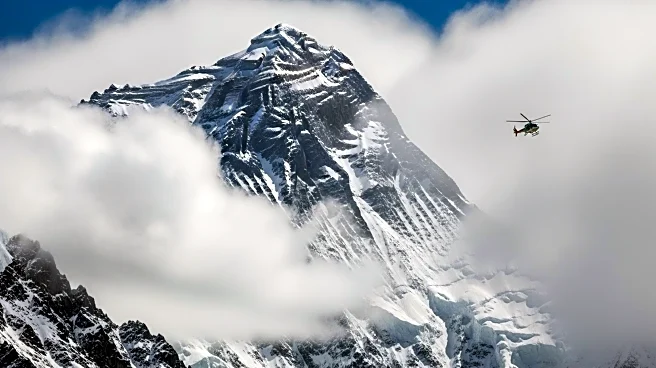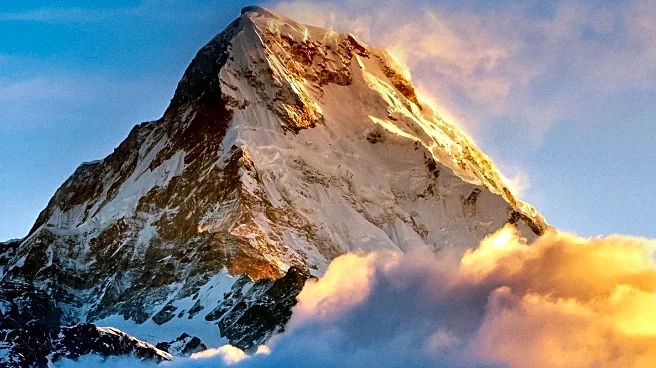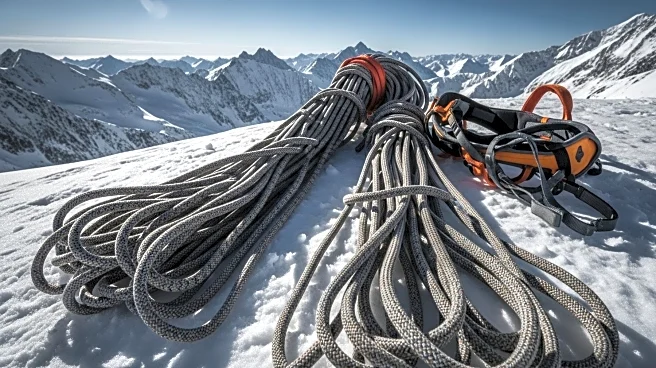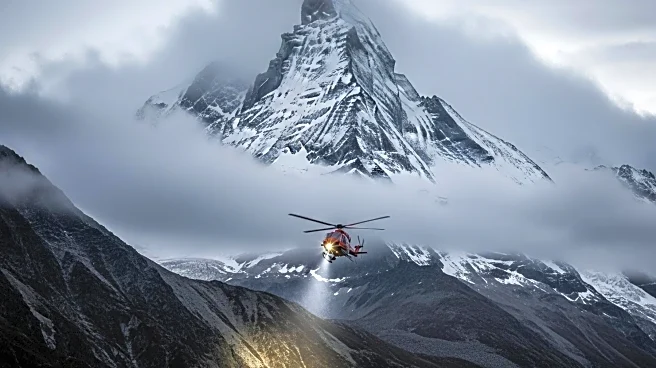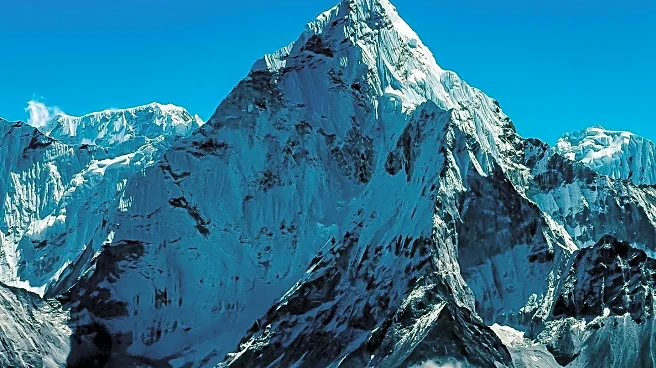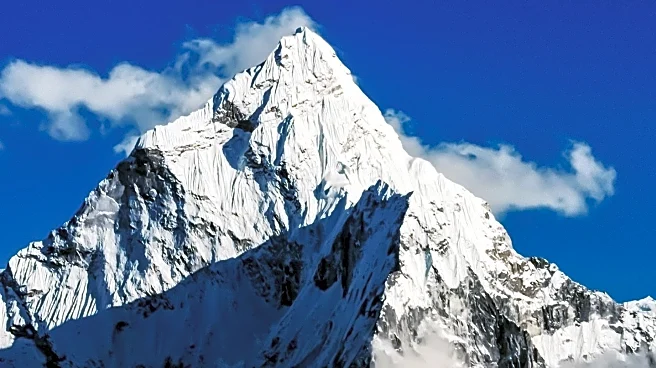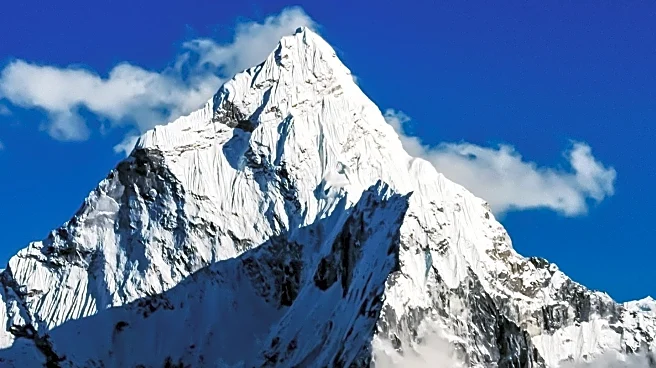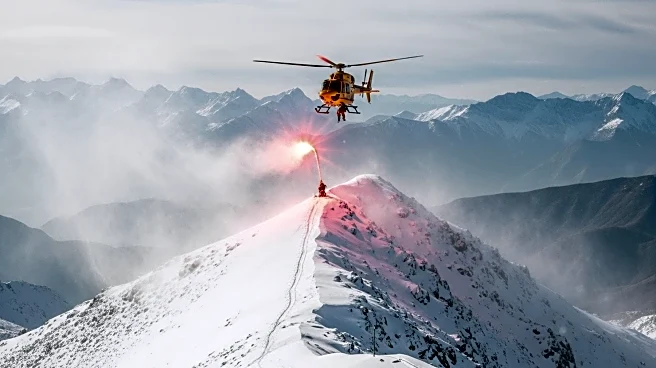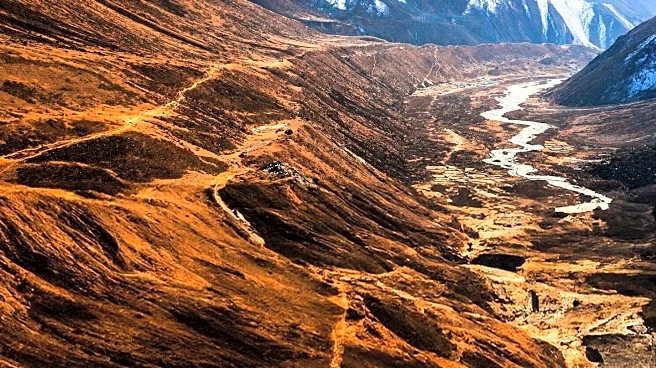What's Happening?
A snowstorm has trapped hundreds of hikers on Mount Everest, with rescue operations underway to bring them to safety. The storm, which occurred during a national holiday in China, has left hikers stranded at elevations over 16,000 feet. Rescue teams have managed to evacuate 350 hikers, while efforts continue to reach another 200. The severe weather has resulted in deep snow, crushing tents and complicating rescue efforts. In a related incident, one hiker has died from hypothermia and altitude sickness in a nearby region. The storm has highlighted the challenges of navigating the mountainous terrain under unpredictable weather conditions.
Why It's Important?
The snowstorm on Mount Everest highlights the growing unpredictability of weather patterns in high-altitude regions, potentially exacerbated by climate change. The incident has significant implications for the safety of climbers and the tourism industry, which relies on stable weather conditions. The large-scale rescue operation underscores the need for improved emergency preparedness and response strategies in such remote areas. The event also raises awareness about the potential risks associated with trekking during periods of increased tourist activity, prompting a reevaluation of safety measures and guidelines for climbers.
What's Next?
Rescue operations are expected to continue as authorities work to reach the remaining stranded hikers. The incident may lead to a review of safety protocols and emergency response plans for trekking in the Himalayas. Additionally, there may be increased focus on the impact of climate change on weather patterns in the region, potentially influencing future tourism and mountaineering activities. The situation is likely to prompt discussions on how to better prepare for and mitigate the effects of extreme weather events in high-altitude areas.

